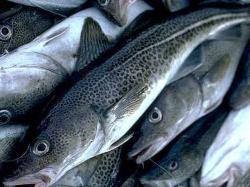Waves Of Change Rock London’s Seafood Industry
May 27, 2010 | 2 min to read

Up close, it is probably the meanest fish ever to grace a British fishmonger’s counter. Reptile-scaled and snaggle-toothed, the tilapia was reared in a tropical pond and its long journey here on ice has left it zombie-eyed and vaguely off-looking.
But we will have to learn to love it. For cod, halibut, haddock and many other species on which Britain’s ancient fishing trade was built are now seriously threatened or officially endangered. Thus weird immigrants such as this tilapia, Asian catfish and tropical prawn will occupy more and more space on fishmongers’ slabs. I am not going to join the British National Party over this, but the loss of our fish is a particular tragedy because, as scientists will tell you, it was avoidable. A few decades of high-tech hoovering in the North Atlantic and a resource that fed us for centuries is nearly exhausted. The EU says that nearly 90 per cent of European stocks are overfished. The politicians, bullied by the industry and driven by the demand for cheap food, refused to act coherently to save the fish.
Thus, within the next few decades, farmed warm-water fish may be all the seafood that most of us can afford to eat. Fresh wild fish will be for the rich and the law-breakers. Stocks of staple white fish such as haddock, cod and halibut are so badly damaged that some scientists believe they cannot really recover.
The data is, of course, hotly debated, not least by the fishing industry. There is evidence that conservation measures in the North Sea may have had some effect on cod populations. But a report this month estimated that 94 per cent of the fish stocks that were present around British shores a century ago have been used up. Despite our high-powered modern ships, flash-freezing techniques and gadgetry that can spot where the fish lurk, we land less than a half the amount we did when British fishing was done largely by sailing boats.
To read the rest of the story, please go to: The London Times.
